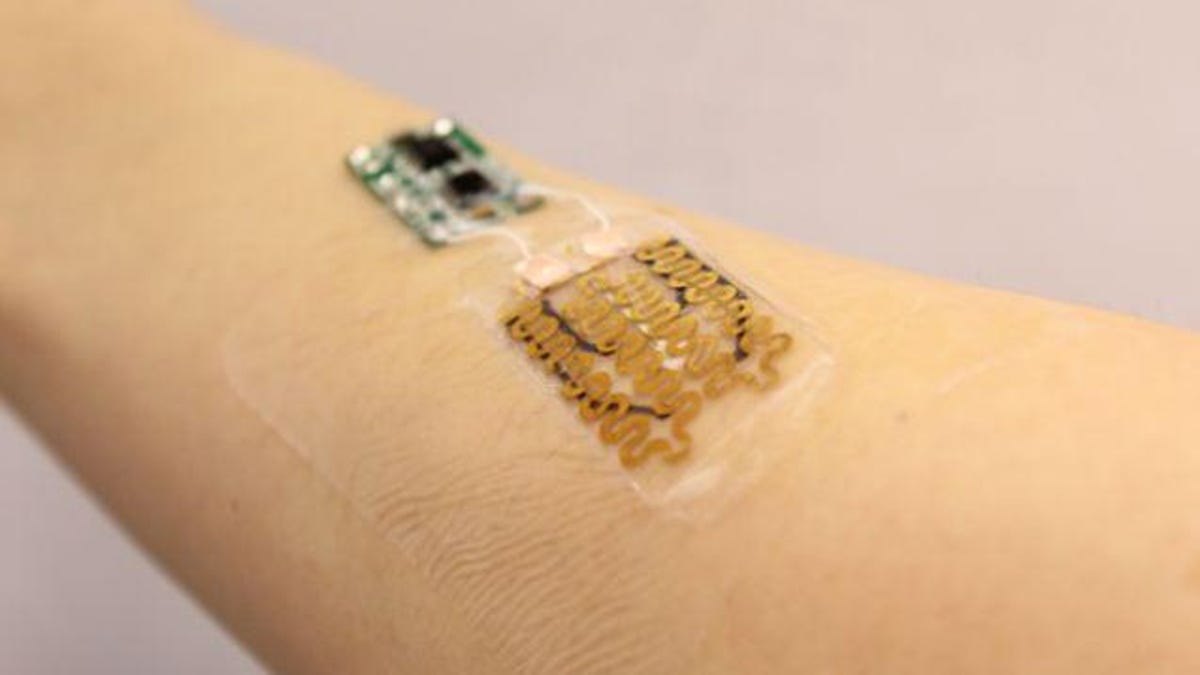This smart bandage can deliver drugs, monitor chronic wounds
Researchers from Tufts University unveiled a prototype of the bandage, which incorporates pH and temperature sensors for monitoring wounds.

This little guy -- at less than 3 mm thick -- packs a lot of tech.
Your bandage could soon be powered by tech.
Researchers at Tufts University shared a prototype late last week of a smart bandage that can monitor chronic wounds and deliver drugs to boost healing. This would effectively transform bandages from a passive treatment into an active part of the healing process.
The bandages include heating elements, have embedded pH and temperature sensors which track infection and inflammation, and can deliver the right drug treatments based on these measurements.
"We've been able to take a new approach to bandages because of the emergence of flexible electronics," said Sameer Sonkusale, professor of electrical and computer engineering at Tufts University's School of Engineering and co-author for the study, in a statement. "Flexible electronics have made many wearable medical devices possible, but bandages have changed little since the beginnings of medicine."
This illustrates how the smart bandage works.
Medical conditions such as diabetes and burns can cause chronic skin wounds, which often lead to infections and amputations. Almost 15 percent of Medicare beneficiaries had at least one kind of chronic wound or infection, according to a recent study. The patients tend to be older and are fully not capable of taking care of themselves. A smart bandage could be a game changer.
The integration of pH and temperature sensors is what makes the bandage so "smart." pH is a critical component of monitoring a chronic wound's healing process. Normal healing wounds have a pH ranging from 5.5 to 6.5, but non-healing infected wounds have pH greater than 6.5. In addition, temperature is a good indicator of inflammation in and around the wound. The sensors in this bandage help monitor these conditions.
A microprocessor reads data from the sensors. If the healing process could use a boost, drug carriers release medication.
All of this is attached to a transparent medical tape, creating a flexible bandage less than 3 mm thick.
The bandages were successfully tested under in vitro conditions. Pre-clinical studies are being conducted to find out if the smart bandages have a clinical advantage in boosting healing when compared traditional bandages and wound care products.
Tech has been incorporated in bandages before. In 2014, a team of researchers developed a smart paint-on bandage that glows to show how much oxygen a wound is getting. And last year, a group of engineers developed a smart bandage that dispenses medicine on demand.
Tech Enabled: CNET chronicles tech's role in providing new kinds of accessibility.
CNET Magazine: Check out a sample of the stories in CNET's newsstand edition.

